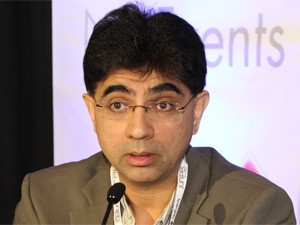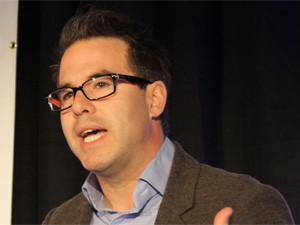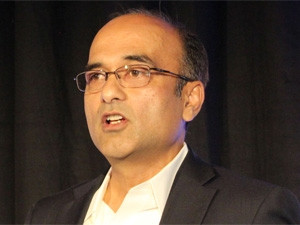
As much as 70% of the average IT budget today gets blown on operational costs - but harnessing evolution in cloud technology may change that, given the right approach, according to Gartner.
So says Sean Hackett, MD of professional services at 451 Group, addressing a panel of industry players at the NetEvents Cloud Innovation Summit, in California, on how they resolve the challenges CIOs face and the questions they have around their private cloud or virtualised data centre.
Hackett presented a debate, "Data centre (DC) shootout - the quest for killer infrastructure", giving representatives from Dell, HP, IBM and Nuage Networks an opportunity to explain how they address the challenges the data centre presents to the network.
DC challenges
New approaches, including real-time performance management, will be needed to ensure seamless, reliable service delivery, says Hackett. "In real life, however, the name of the game is compromise."
Hackett identifies the top six typical conflicts between what CIOs really want from their internal (private cloud) or virtualised data centre - and what can actually be achieved.
"Legacy network architecture is seriously constrained in dealing with scale and virtual endpoints. Solving these new problems requires either the migration of network function to software running outside the physical network, or the basic architectural improvement of the physical network," says Hackett.
"This technology inflection point has the potential to enable major shifts in the network industry."
He says, at each step, the changing data centre challenges the network:
1. Consolidation: by historical standards, measured in the numbers of devices and network ports, a modern data centre network is unimaginably large, stressing network management capabilities.
2. Virtualisation: compounds the issue of scale and creates a host of additional issues having to do with many virtual network endpoints sharing the same physical endpoint.
3. Multi-tenancy increases the independent activities in a large data centre, but the number of tenants in a modern data centre far exceeds the number of virtual networks supported by legacy network infrastructure.
4. Applications are more complex: driving changes in traffic flow (east-west versus traditional northbound and southbound traffic).
5. Rapid price/performance improvements in commodity servers: the available computing power per square foot has increased at an accelerating rate and has driven up the demands for data centre networking capacity.
6. Hybrid cloud architecture: requires transparent integration with existing customer networks.
Dell strategy
Hackett poses the question to the four industry players: "I'm a CIO, who is moving to private cloud. How can you help me?"
Arpit Joshipura, vice-president of product marketing at Dell, says the company employs a strategy based on "future-ready IT" when it comes to addressing the said challenges.

"We look at the software-defined enterprise - moving from a hotdog model to a lasagne model. This gives you the building blocks of scalable infrastructure that allows you to do software-defined networking (SDN), etc."
Secondly, he says: "We look at the software-defined enterprise end-to-end. This includes software-defined services - like infrastructure-as-a-service, software-as-a-service and orchestration - as well as client access (virtual desktop infrastructure and bring your own device, or BYOD) and services migration from traditional IT to cloud-based."
The software-defined enterprise needs to be looked at holistically, says Joshipura. "You have the software-defined server - which is essentially a virtual machine, the software-defined storage that makes up the software-defined data centre and the software-defined user device - or virtual desktop."
That is the physical view, he says, which is complemented by the logical stack consisting of enterprise IT services at the top, with security and management below that, the orchestration stack and then infrastructure control (any hypervisor).
"The challenge isn't whether or not we agree with this stack - but rather how we get there. Dell's SDN strategy is underpinned by the opening up of the network."
HP strategy
Dominic Wilde, HP's vice-president of global product line management, networking, says the world is moving to a new style of IT, and networking innovations lay the foundation for this transformation.

The four megatrends, says Wilde, are cloud, security, big data and mobility. "We have to have perspective in all of these."
He reiterates HP's core strategy - that of ultimately simplifying the network. "Networking has been far too expensive and far too complicated for far too long.
"The pillars of simplification are based around open standards (interoperability), convergence (which allows a smaller footprint), virtualisation (which means high utilisation and lower capital expenditures) and automation (which eliminates human middle ware and lowers operating expenses)."
Wilde says HP's value proposition is network simplification, which enables agility, monetisation and lower total cost of ownership ? from both an opex and a capex perspective.
HP's FlexNetwork architecture delivers this, he says. HP positions the product as having five primary benefits: an open and standards-based solution with scalability on three dimensions: security, agility, and consistency.
"When legacy networks are pushed to the limit, they become fragile, difficult to manage, vulnerable, and expensive to operate. Businesses whose networks are at this breaking point risk missing the next wave of opportunity," says HP.
IBM strategy
Charles Ferland, SDN global sales and business development executive at IBM, says at some point, software-defined everything will be the status quo.
"IBM looks at the data centre holistically, in terms of a software-defined environment. It's not about a single focus on technology, but rather on the data centre in the broader sense, and integrating it into a software-defined environment."

He says IBM has a family of products for a simplified SDN experience, including VMware, KVM and OpenFlow software for virtual environments.
"[The products offer] unified architecture, combining the benefits of network virtualisation and an OpenFlow fabric. They are built on open standards (OpenDaylight), enabled for integration with OpenStack managers like SmartCloud Orchestrator, and offer an extensible software platform for delivering network solutions by an ecosystem of collaborating partners."
Examples of SDN solutions, he says, include load balancers application delivery, firewalls, intrusion detection, and network monitoring.
"We harvest the full potential of our software portfolio to interface with the network through various partners."
Nuage strategy
Sunil Khandekar, president and CEO of Nuage Networks, says the question CIOs want an answer to is: "How do I take my existing data centre and make it as agile, programmable and automated as Amazon's?"
He says many have multiple data centres, and are under pressure from customers to deploy applications rapidly. "[They] seek an environment within which they can build a data centre/cloud as good as Amazon Web Services, and they want control over all their assets in the data centre."
This is where the Nuage solution comes in, says Khandekar.
"We view the solution in terms of the evolution of the data centre network status quo. The network is out of sync. It is still very manual, even though it is new. The problem is it is too complex, custom, costly and closed.
"This is the real issue. We need to completely rethink how we have been applying the network so far. We need to rethink how to manage and operate networks."
The fundamental change, says Khandekar, is not looking at the network as a product - as has been the case over the past decades - but rather to look at application delivery as the product. "As applications and user needs change, so should our approach to networks.
"And what technology underpins this approach? The key attributes of SDN are abstraction, automation, control and visibility. These are key to making networks as consumable as compute is."
He says CIOs want automation across all data centres. "They want control and visibility across all their assets and to be able to address issues instantly through a self-service portal."
He says, as telco applications become virtualised, they have a network functions virtualisation platform - "but ultimately, it is the SDN platform that allows them to bridge the gap between cloud applications and the network to the end of delivering the consumable network."
Share